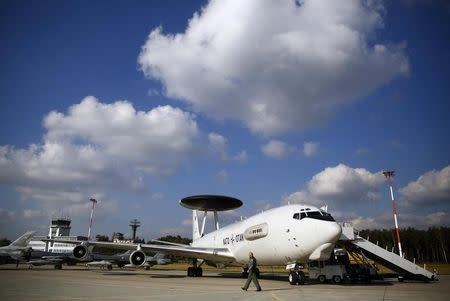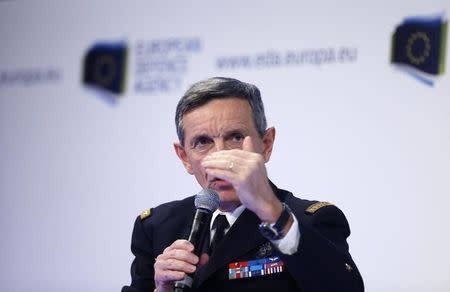NATO sees resilience as key issue in AWACS replacement
By Andrea Shalal WASHINGTON (Reuters) - Resilience, innovation and advances in technology will be key factors as NATO maps out a multibillion-dollar effort to replace its aging fleet of 17 Boeing Co E-3 Sentry Airborne Warning and Control System (AWACS) aircraft, a top NATO official told Reuters. French General Jean-Paul Palomeros, Supreme Allied Commander Transformation, said NATO was starting to map out its requirements for the next-generation of weapons to detect air and surface threats, which will be needed between 2030 and 2035. Growing threats and greater ability to share information pointed to a so-called "system of systems" approach, rather than a straight one-for-one replacement of a few, highly visible aircraft that would be vulnerable to attack. "This a very crucial project for NATO for the next two decades," Palomeros told Reuters last week at a conference in Washington hosted by the Center for a New American Security. Rapid weapons development by Russia and other potential foes meant the next-generation weapons system would have to be more resilient to attacks, Palomeros said. Officials were also looking potential other uses for the aircraft, and whether intelligence analysts would be stationed on board, he said. Boeing, Europe's Airbus, and other big weapons makers are keeping a close eye on NATO's emerging plans to buy new early-warning capabilities, one of the few larger acquisition programs in sight. Palomeros said the program would be a test case for many NATO priorities, including a push for more innovation, expanded partnerships among members, and a drive to better balance spending among NATO members. "The replacement for AWACS is a perfect project for trans-Atlantic cooperation. It opens a lot of doors," he said, adding officials had begun early conceptual work to shape the requirements for the new program. France, Britain, the United States and other countries have their own early-warning systems, which could translate into more demand for the new weapons system in the future. He said it would be crucial for NATO to carefully define what was expected from the new system, or it could result in a "very complex, unaffordable system" that would carry risk in development, production and even operations. Palomeros acknowledged problems with some past multinational weapons development programs, like the Airbus A400M military transport plane. But he said the success of the NATO Air Command and Control System, developed by a joint venture of France's Thales and U.S. weapons maker Raytheon Co, had proven that cooperative development programs could work. (Editing by Eric Walsh)


